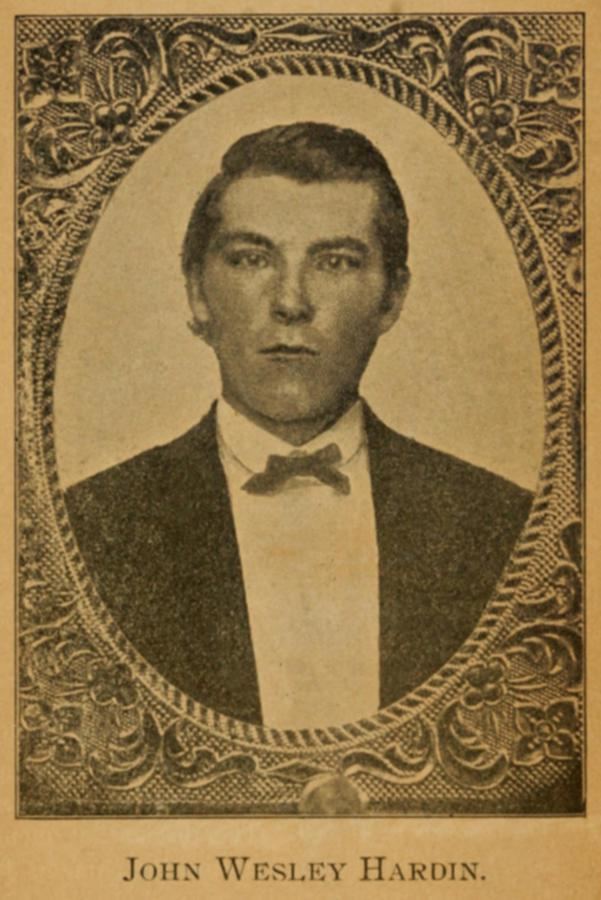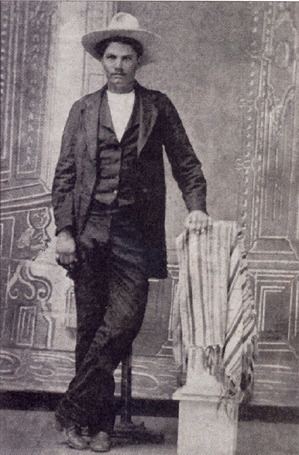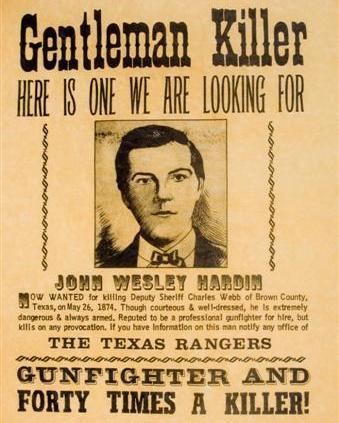Role Gunfighter Name John Hardin | Rank Colonel Nickname(s) The Indian Killer | |
 | ||
Allegiance Kingdom of Great Britain United States Service/branch Virginia militiaContinental Army Battles/wars 1st Battle at SaratogaHarmar Campaign Died August 19, 1895, El Paso, Texas, United States Books Gunfighter: The Autobiography of John Wesley Hardin, The Life of John Wesley Hardin Spouse Carolyn Jane "Callie" Lewis (m. 1895–1895), Jane Bowen (m. 1872–1892) Parents James Hardin, Mary Elizabeth Dixson Similar People Wild Bill Hickok, John Wesley, Billy the Kid | ||
John Hardin (October 1, 1753 – circa May 1792) was a soldier, farmer, rancher, noted marksman and hunter. He was wounded fighting in Lord Dunmore's War; served as a Continental Army officer in the American Revolutionary War and as a Kentucky Co., Virginia militia commander in the Northwest Indian War. He was a member of the Methodist church and one of the first judges in the original Washington County, Virginia (later to become Washington County, KY). John Hardin was killed in an ambush while acting as a peace emissary (under the direction of the President, George Washington) to the Shawnee Indian people.
Contents
- Early life
- Lord Dunmores War
- Revolutionary War
- Later life
- Later militia service
- Final service
- Namesake places
- Relations
- References

Early life
Born in Prince William County, Virginia (in an area that is now Fauquier County), John Hardin was the first son and fifth child of Martin Hardin (1716–1778), an owner of an "ordinary" (or roadhouse/bar) who was a member of the Virginia militia, and Lydia [nee Waters] Hardin (1721–1800). John Hardin married Jane Daviess, and together they had seven children, with future Kentucky senator, Martin D. Hardin, their youngest.
Lord Dunmore's War

Due to his reputation as a marksman, Hardin was asked in 1774 to join Capt. Zack Moran's company, mustering in as an ensign to fight hostile Indians in Lord Dunmore's War. Hardin's exploits led to him become known on the frontier as "The Indian Killer". In a battle with the Indians, Hardin was wounded in the groin by a musket ball. The musket ball remained in him for the rest of his life.
Revolutionary War
In the War of Independence, John Hardin was a 2nd Lieutenant in the 8th Pennsylvania Regiment, better known as "The Provisional Rifle Corps" (or Morgan's Rifles), and fought at Saratoga, while serving directly under Colonel Daniel Morgan.
Later life
In 1786, the Hardin family settled on a large parcel of land in Washington County, Virginia (now Washington County, Kentucky), where they farmed and raised stock. They also joined the Methodist church in that area. Hardin had some success as a rancher, continually adding acreage to his original tract.
Later militia service
As a militia captain in 1786, John Hardin led a successful attack on a Piankeshaw village near present-day Vincennes, Indiana which, unfortunately, belonged to a friendly tribe that had been colonial American allies. In August 1789, he led another militia expedition to the Terre Haute, Indiana area where he attacked a Shawnee village and returned to Kentucky with twelve scalps.
Hardin was promoted to colonel and repeatedly engaged Indians during the Northwest Indian War in the Ohio Territory. In 1790, he led a detachment of the Kentucky County, Virginia militia on the disastrous Battle of Heller's Corner (also known as 'Hardin's Defeat'). Their rout began a long succession of American losses to Miami chief, Little Turtle. In 1791, Hardin led a force of 60 Kentucky mounted militia in the destruction of a large Kickapoo village near the mouth of the Big Pine Creek, as part of General Charles Scott's campaign to destroy Ouiatenon.
Final service
In April 1792, President George Washington sent word to Hardin asking him to negotiate a peace with the Shawnee. Soon thereafter, in the area that is now Shelby County, Ohio, John Hardin met with a party of the Shawnee, who offered to escort him to their village. Instead, they attacked him and murdered him as he slept. Also killed was a servant of Hardin's, identified simply by his last name, Freeman. Another of the party, a guide named John Flinn - who had lived among the Indians after being captured by them as a boy - survived, later settling in Miami County, Ohio.
